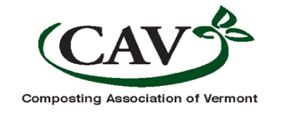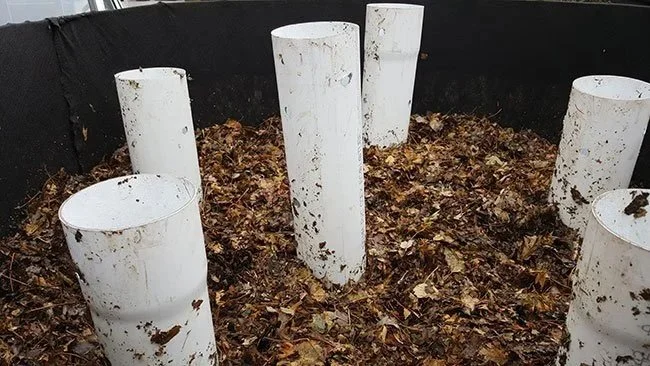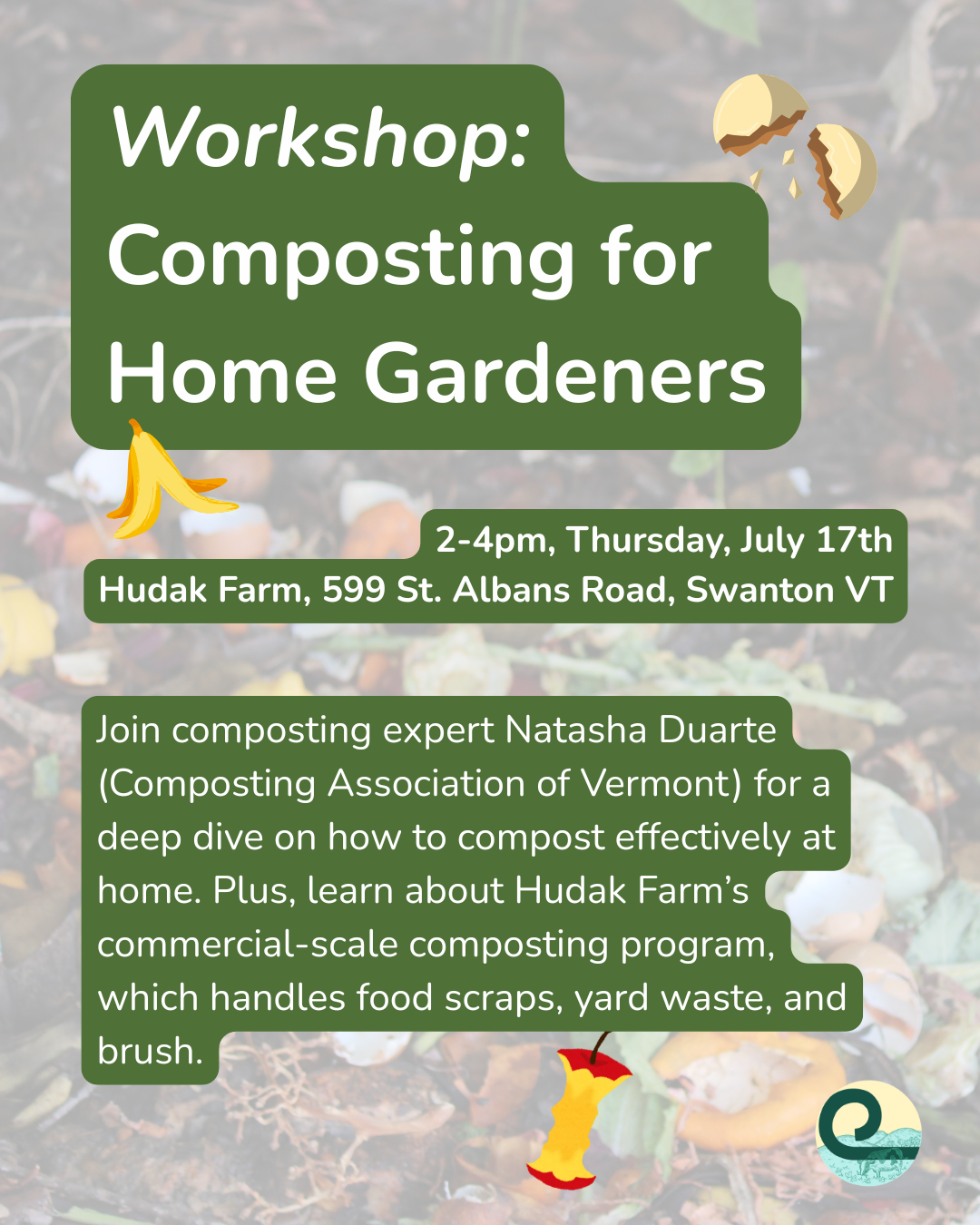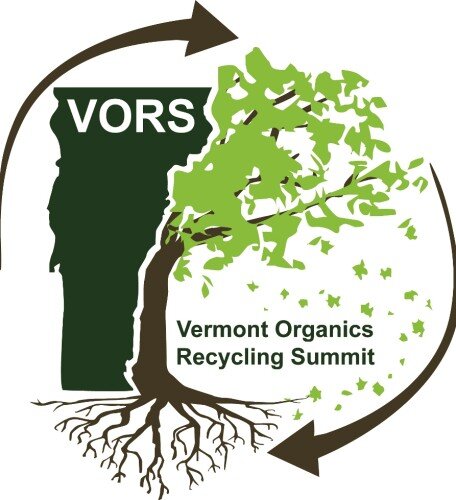CAV Program: Project 319
— so called for Section 319 of the Clean Water Act . . .
Gary Davis of Jericho, Vermont, standing aside his self-made compost turner.
A common trend in agriculture, especially in Vermont and New England is the increasing size of agricultural livestock herds on the same land base, with a corresponding and dramatic increase in the amounts of manure applied to this limited land base. In many cases this application exceeds the ability of the land to absorb and utilize these nutrients, causing significant nutrient pollution of our streams and lakes. This is recognized as one of the non-point sources of water pollution today, and is also noted as one of the largest pollution problem in Vermont’s Lake Champlain. In addition, the risk for farmers of contaminating their own wells or those of their neighbors is increasing, as their manure application increases. There remains a lot to do to help farmers reduce their potential environmental liability, primarily from agricultural non-point source nutrient pollution. The US EPA has recently begun to address non-point source pollution with new regulations, and may soon begin to regulate smaller farms. This risk of drinking water and surface water contamination is also clearly a risk to farm business sustainability.
Gary Davis, participant of Project 319, has been interested in making composting a part of his dairy farm operation for over ten years. Gary is pictured here by his compost windrows
On farm composting, coupled with nutrient management is one effective method that farmers can use to reduce water pollution from nutrients. Many farms have the additional problem of how to dispose of dead animals. Composting can provide effective solution for both mortality disposal and manure management. Composting has the additional potential benefit of providing value added incremental income to farmers, enhancing small farm sustainability, and compost is a valuable soil amendment. However, even though composting requires technolgoy that is often already part of a farming operation, there are significant knowledge and experience barriers to on-farm composting.
Adams family: Dave, Judy and daughter, Mandy standing by their tractor with attached compost windrow turner.
CAV’s one year, watershed based, on-farm composting project provided start-up technical composting and business assistance to participating farmers, as well as some market development. Participants were provided with a composting technical manual, equipment and individual assistance as needed as part of the Section 319 grant project. This pollution abatement demonstration project was designed to significantly increase the amount of manure composted by recruiting more farmers to produce and use compost through local outreach and education efforts in cooperation with: USDA Natural Resource Conservation Service (St. Albans Office), Vermont Natural Resource Conservation Districts of Franklin County and Winooski Valley, Vermont Agency of Agriculture, Food, and Markets, Vermont Department of Environmental Conservation’s Compost Center and Water Quality Division, Lake Champlain Basin Program (LCBP), and the UVM Watershed Alliance.
The purpose of the project was to potentially decrease agricultural non-point source nutrient pollution, specifically phosphorus.
Project objectives:
increase # of tons of compost produced, therefore decreasing the # of raw manure tons spread
create a peer-to-peer learning model so that farmers/growers may learn from participants’ composting systems
install and/or improve systems for composting animal waste on two or three working farms in Lamoille County
expand demonstration projects on two working farms with varied handling systems (Adams’ and Berthiaume’s)
demonstrate simple and economical on-farm composting technologies to farmers and other interested parties
explore the marketing potential for the compost produced on these farms
educate and inform the agricultural community, students, teachers, policy-makers, agency officials, natural resource managers, and the general public about the suitability, benefits and drawbacks of composting
build leadership by training farmers on how to compost manure and apply and/or distribute their compost.
We are grateful to the following supporters for their generous support with funding this valuable program:
Vermont Agency of Natural Resources Department of Environmental Conservation Water Quality Division
John Merck Fund
Sustainable Future Fund (through the Vermont Community Foundation)







